Would you like to be a successful UGC Creator? Then you need these 5 tips for organizing and running your UGC business.
DISCLAIMER: Links included in this post might be affiliate links. If you purchase a product or service with the links that I provide I may receive a small commission. There is no additional charge to you! Thank you for supporting me so I can continue to provide you with free content each week on my blog and on my YouTube channel!
Welcome back to my UGC series. In this series, I’ve been helping you learn the basics of becoming a UGC Creator and landing paid brand deals. Now that you’re landing paid deals left, right, and center, it feels only natural that we talk about how you can manage and organize your UGC business.
If you’re new around here, UGC stands for User-Generated Content and it’s a way to creatively work with brands, without needing to first grow your audience. I’ve been sharing tips to help new UGC creators throughout the year, so if you need more help, watch this video next.
How to Organize and Run Your UGC Business
I’ve broken this guide into ‘phases’. Each ‘phase’ is a different thing you should be tracking within your UGC business. Let’s jump in with phase one or in other words, the basics.
Starting with the Basics
There are two parts to phase one. First, you need to pick a tool that you’re going to use to stay organized, track your deals, and follow up with brands. Then you’re going to set that tool up so that it helps you stay organized and professional.
So, first things first, what tool should you use for your UGC business?
There are many project management tools to choose from, tools as Asana, Click-Up, or Monday.com (and they all have free plans). However, in today’s guide, I’m going to be using Notion. I personally love Notion. Notion is such a powerful tool that can transform your UGC business, but if there’s another platform you prefer, these steps will still help and apply to you!
Once you’ve chosen the platform you want to use, you need to create a “Quick Grabs” folder. Your Quick Grabs folder is where you’re going to store everything that you find yourself looking for on your computer.
What do I mean by this? Here are some examples of what you should store in your Quick Grabs folder:
- Links to your social media platforms
- Link to your portfolio
- Pitch templates
- Contract templates
- Links to 3rd party platforms
- Prefilled W-9 form
The point of the Quick Grabs folder is to be everything that you use regularly, in one place so you don’t have to waste time looking for links, logins, or templates.
Tracking Your Pitches
Once you have your quick grabs folder set up, you need to create a space where you can track the communications on your brand deals. This is where you’ll be able to see the brands you’ve pitched, who you’ve followed up with, who’s responded, and who still needs a response from you.
It’s so easy to lose track of communications so this is a very important step.
Start by creating a brand board, page, or area (depending on the tool you’re using.) These are multiple phases of communication with brands, so this board will be where you can keep track of each of those.
Here are some examples of communications you’ll want to track during your pitches:
- Networking
- Pitching
- In Negotiation
- Drafting a Contract
- Pre-production
- Production
- Post-production
- In Review
- Needs Revisions
- Deliverables Completed
- Invoice Sent
- Follow-up
- Renewal
- Archive
This board is where you’ll be able to keep track of brand contact details, important dates, approval phases, and any tasks that you need to do, for that brand.
Tracking the Content
The next board or page that you need to set up to organize your UGC business is a content creation tracker. This board should have a section of deliverables for current collaborations, content ideas and inspiration, and revisions needed on deliverables.
The cool thing about working with Notion is that all of these pages and boards can be interconnected. Meaning, that when you update something in the brand details, it will pull that information into the brand deliverables and content tracker.
A lot of tools also give you a calendar view, which is really helpful for tracking your UGC content. With a calendar view, you’ll be able to visualize your tasks for the month much quicker and easier.
Notion also syncs with Google Calendar which can help you make sure you’re not spreading yourself too thin. It will help you make sure you’re not scheduling content creation on a day when you have multiple calls, etc.
Getting Paid
Step four of organizing your UGC business is making sure that you’re getting paid. It’s all well and good to organize your contacts and content production, but at the end of a project, you’re the one who has to make sure you’re getting paid.
This is also the place where you can keep your invoice template so that each time you work with a new brand, you can quickly and easily get paid.
Things you need to track to make sure you get paid appropriately for your UGC deals include:
- Sending invoices
- Invoice send and due dates
- Monitoring usage rights
- Renewing usage rights
You can also use this section to track how much money you’re estimated to make each month and year through your UGC business.
Keeping Track of Your Contracts
The last step in organizing your UGC business is keeping track of your contracts.
After a contract is signed by both parties, make sure that you download it – and upload it to the brand tracker. This will help you refer back to the agreed terms of the deliverables as you create the content.
One of the most important aspects of User-Generated Content is Usage Rights. If you’ve never heard of usage rights before, they’re essentially how long the brand has the ‘right’ to use your content. Along with how long they can use your content, usage rights also determine how they can use it.
There’s organic usage rights which means a brand can use your content on their organic socials or there’s paid usage rights which means a brand can run ads using your content. You’ll often be negotiating usage rights for anywhere from 3 to 12 months.
Keeping close track of your usage rights is the best way to make sure you’re getting paid accordingly for the content you’ve created and potentially working with brands again in the future!
All of this means that one of the most important things you need to organize in your UGC business is usage rights.
Those are the 5 phases of working with brands as a UGC creator, that I recommend organizing for your UGC business. Being a UGC creator is a legit business and there are a lot of moving parts! I know that these 5 steps will help you manage and scale your UGC business while staying professional and never missing a deadline.
Organizing your UGC business will help you stay professional and most importantly, sane.
If you’re looking for the perfect tool to organize your UGC business, check out my UGC Creator Bundle. All of the screenshots shared in this post are pulled directly from this resource. It’s the quickest and easiest way to set up and run your UGC business.
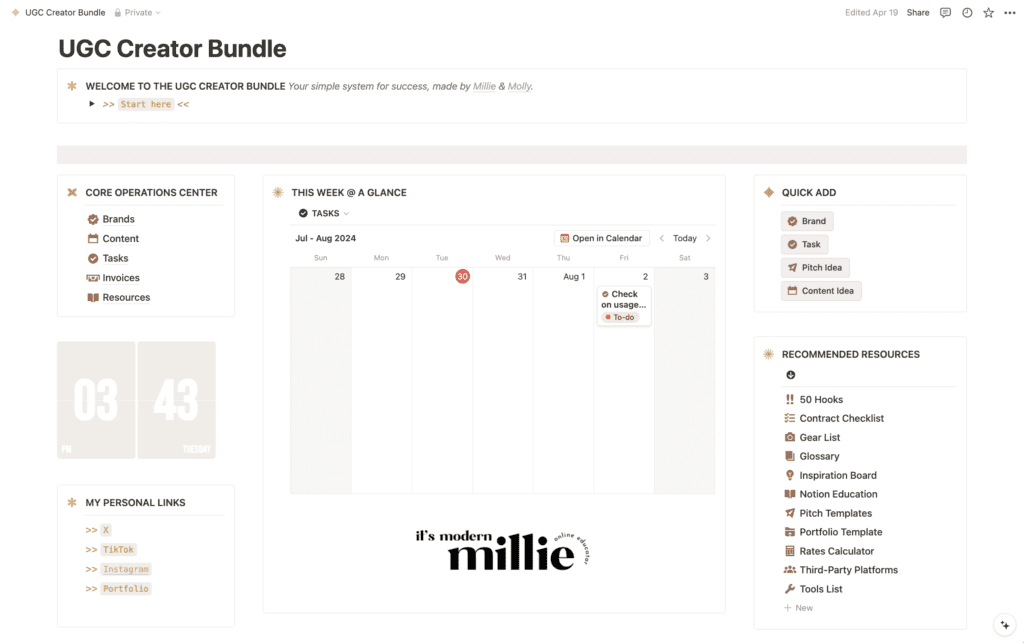
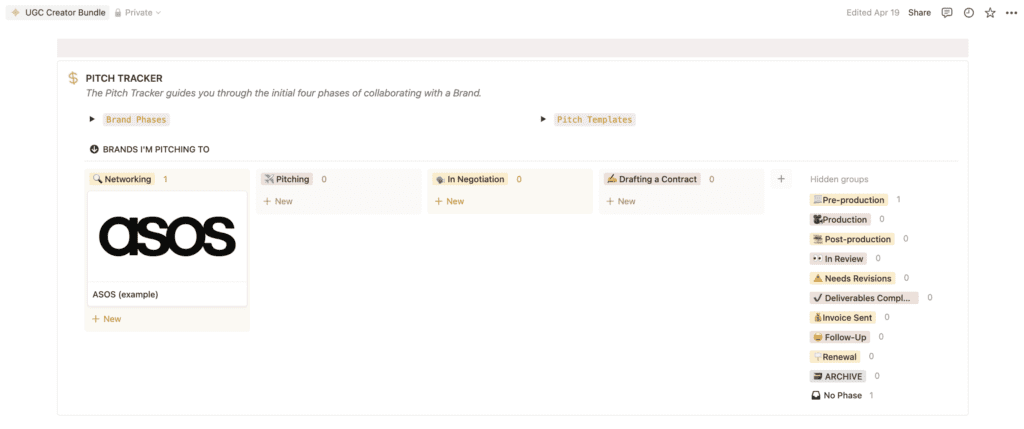
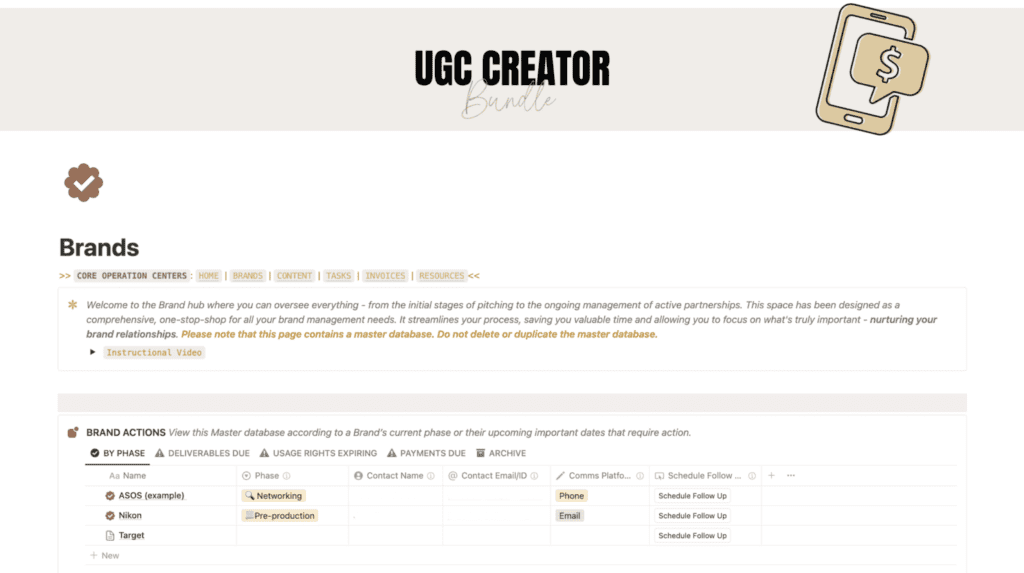
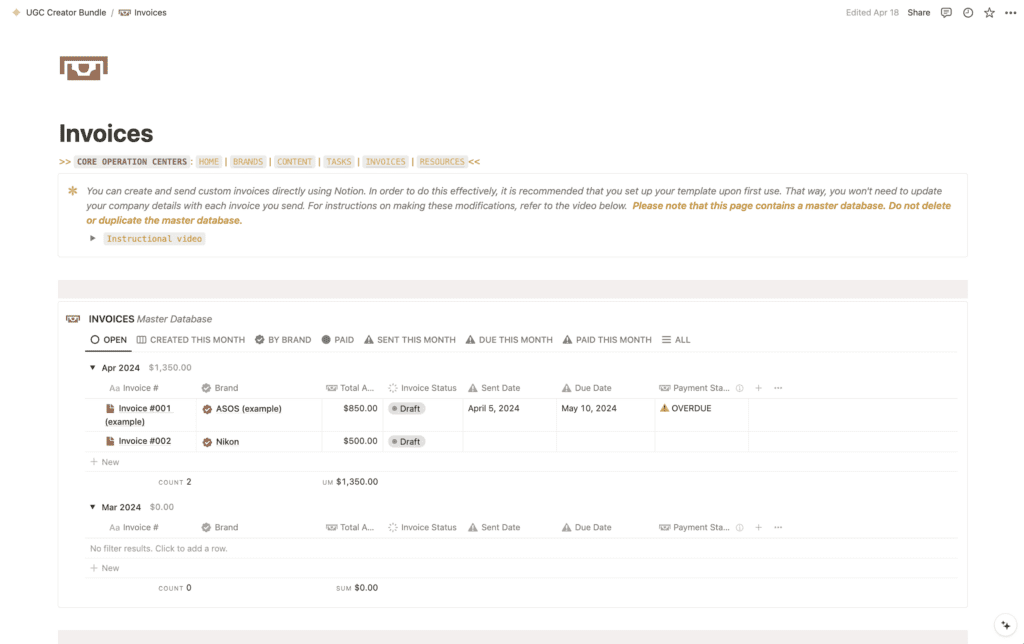
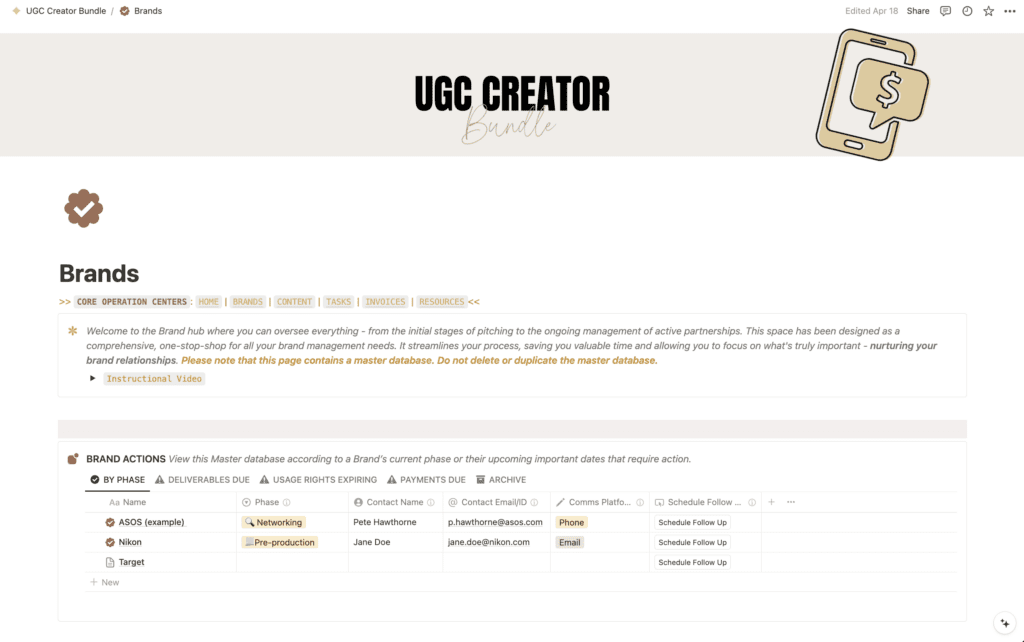
Be the first to comment